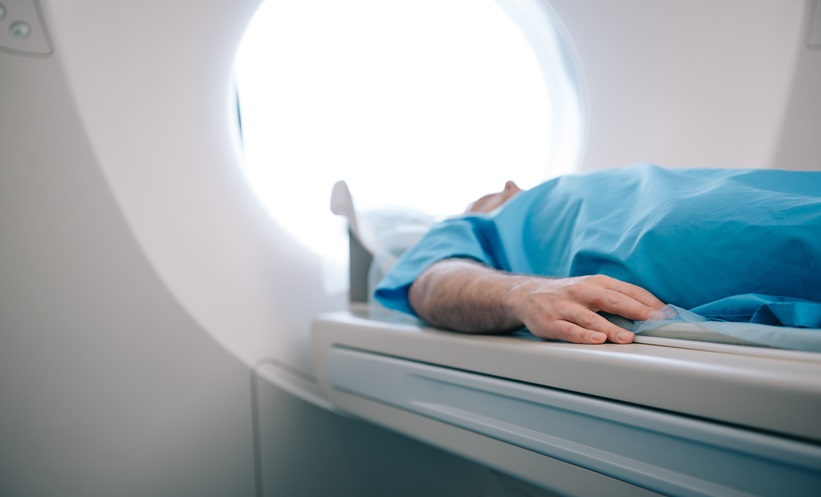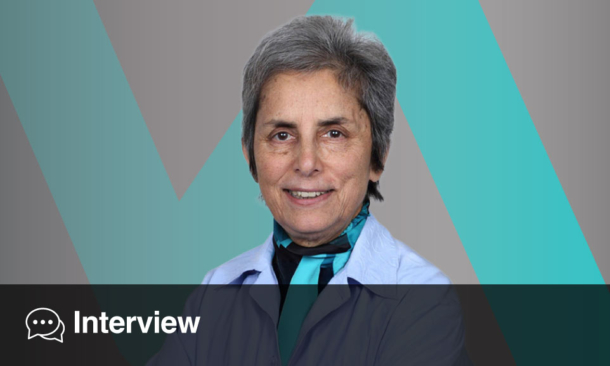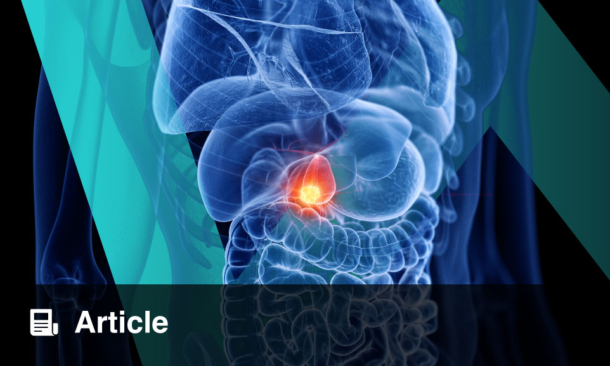Jörn Schattenberg: Professor of Medicine and Director, Department of Medicine II, Saarland University Medical Center and Saarland University, Homburg, Germany
Citation: EMJ Gastroenterol. 2025;14[1]:47-50. https://doi.org/10.33590/emjgastroenterol/NRBR7785
![]()
To start, could you briefly share the key messages from your presentation on glucagon-like peptide-1 (GLP-1) agonists beyond diabetes and obesity?
It’s an exciting time for metabolic dysfunction-associated steatotic liver disease (MASLD). It’s one of the key drivers of end-stage liver disease. These patients develop cirrhosis, decompensation, and cancer. While not all patients progress that far, we have a very high prevalence of metabolic liver disease, formerly known as fatty liver, and a subgroup develop severe liver disease.
In my presentation, I revisited the available data on incretins. This class of drugs stimulates GLP-1 and sometimes other receptors, such as glucagon and gastric inhibitory polypeptide, producing beneficial effects on the liver. They are typically used in diabetes and obesity and show robust effects, but based on the combination of receptors they target, there can also be liver-specific benefits.
The biggest trial we’ve seen is the ESSENCE trial, which explored the effect of semaglutide at the obesity dose (2.4 mg) on improving liver histology. After 72 weeks of treatment, inflammation in the liver resolved, and fibrosis improved. These are very encouraging data. These patients typically lose around 10% of their body weight, slightly less than in obesity trials, but still significant. There’s no GLP-1 receptor in the liver, so the benefits likely come from metabolic improvement and weight loss.
There are also drugs that target both GLP-1 and glucagon receptors. Glucagon receptors are found directly on liver cells. For example, survodutide, currently in Phase III trials, and pemvidutide, another dual agonist, have shown improved liver histology in published Phase II studies. These drugs are now being tested for outcomes beyond histology, such as clinical endpoints.
Another drug I discussed was retatrutide. The companies developing these agents have recently announced large outcome trials enrolling patients even without liver biopsies. This reflects the growing recognition of MASLD as a relevant and prevalent disease. We now use biomarker tests to identify patients with more advanced disease and enrol them in incretin-based clinical trials.
In the same session, my colleague Frank Tacke (Charité – Universitätsmedizin, Berlin, Germany) presented data on the only currently approved drug for metabolic dysfunction-associated steatohepatitis with fibrosis, resmetirom. Interestingly, this drug improves liver phenotype even in the absence of weight loss.
Could you tell us briefly about your other United European Gastroenterology (UEG) Week sessions?
We opened the Congress with a postgraduate course attended by over 5,000 participants, covering the full spectrum of gastroenterology. I was involved in the liver section, focusing on non-invasive testing and the shift away from biopsies now that we have effective drugs.
Day 2 featured the opening plenary, with presentations on liver regeneration and innovative therapies. I also presented data on primary biliary cholangitis, a rare liver disease affecting around 90% women that is linked to bile duct inflammation and severe itching. A new second-line therapy was recently approved for patients who don’t respond to first-line treatment, which is a major advancement.
There’s a lot happening in both common and rare liver diseases, and even in primary biliary cholangitis, we’re learning more about how sex hormones influence disease biology. It’s an exciting time for hepatology research.
Much of your research centres around metabolic liver disease. What emerging evidence suggests that GLP-1-based therapies could benefit patients with MASLD and metabolic dysfunction-associated steatohepatitis?
There’s now a growing body of high-quality evidence from interventional, placebo-controlled, randomised trials: the highest level of evidence we have. The ESSENCE trial is the leading one published so far, and several Phase III trials are ongoing, building on promising Phase II studies.
Data from trials using tirzepatide, which is approved for diabetes and obesity, and survodutide, also show liver benefits. Beyond trials, registry studies comparing patients on GLP-1 therapy versus those not on it suggest fewer liver-related events in the GLP-1 group. These are observational, not randomised, so we can’t prove causality, but the association is strong, especially in large registries involving up to 300,000 patients.
Interestingly, GLP-1 drugs also appear to modulate behaviours like alcohol and nicotine use and even gambling or cravings for substances such as marijuana. These effects are mediated through the central nervous system, reducing cravings. So, the benefits of GLP-1 agonists extend beyond metabolic improvement; they affect overall behaviour and lifestyle.
However, these drugs work only as long as patients take them. Once treatment stops, weight regain often follows, and that regained weight tends to be fat, not muscle. So, I always discuss long-term therapy, access, and cost with my patients.
In Germany, for example, the obesity-dose semaglutide used for liver disease isn’t covered by healthcare providers. Patients must pay out of pocket, which can cost several hundred EUR per month. In the USA, only about 30% of patients remain on the drug after 1 year due to affordability and access issues. For liver disease, we often use the higher obesity dose, so cost is a major barrier.
What is actually causing the liver benefits in patients taking GLP-1 agonists?
Weight loss is the primary factor. Even a 5% reduction helps reduce liver fat, and a 10% loss can reverse fibrosis. However, there are also weight loss-independent effects. In my presentation, I showed a mediation analysis demonstrating that some improvements in liver histology occur even in patients who lose little weight.
This suggests that other mechanisms, like changes in adipose tissue, adiponectin, leptin, or metabolic markers such as fibroblast growth factor 21(FGF21), also play a role. In fact, there are FGF21 analogues in development showing early evidence of cirrhosis regression. So, GLP-1 agonists may have both direct and indirect liver-protective effects.
As GLP-1 therapies expand beyond diabetes and obesity, what challenges do you foresee in bringing these treatments into everyday hepatology and gastroenterology practice?
The first challenge is awareness. Liver disease is a key part of the metabolic injury caused by obesity and diabetes, alongside cardiac and renal complications. It’s part of what we now call the cardio-kidney-liver-metabolic disease spectrum.
We also need to combat the stigma that still surrounds liver disease. Many patients with metabolic or other non-alcohol-related liver diseases are wrongly labelled as alcoholics. Awareness among physicians, patients, and the public is essential to changing that perception.
You recentlybecame the UEG Scientific Committee Chair-Elect. What are your priorities for this role, and how do you hope to shape the scientific direction of future UEG meetings?
Yes, I was very excited about being elected. The Scientific Committee is already planning for UEG Week 2026 in Barcelona, Spain, and my main goals are to involve the next generation of gastroenterologists and scientists, strengthen cross-disciplinary collaboration, and highlight metabolic diseases as key drivers of health issues across gastroenterology.
We’re working to connect early-career clinicians and researchers through initiatives such as the Rising Star Awards and UEG Fellowships, ensuring that they can engage with the society and contribute to shaping the field’s future. Another priority is to foster collaboration between different specialties (those working in areas like inflammatory bowel disease, liver disease, pancreatic disorders, and nutrition) so that we approach gastroenterology in a truly integrated way.
I also want to bring greater attention to metabolic diseases, which are becoming increasingly common across our field. These conditions are linked not only to liver disease but also to the pancreas and colon, with rising rates of early-onset colon cancer in younger patients with obesity or diabetes. Screening programmes may need to adapt to reflect this shift. UEG’s strength lies in its breadth, and I want to use that to drive more awareness and innovation in these interconnected areas.
Are there any sessions at UEG Week that particularly interest you or that you’d recommend attending?
It’s the totality of the sessions that makes UEG Week special. This year, we introduced the Digestive Disease Meetings (DDM) Summit, which focuses on basic science, the foundation for developing new therapies and diagnostics.
The hands-on training sessions are another highlight. We offer live-streamed endoscopy demonstrations and practical sessions where participants can use simulators and work in multidisciplinary teams.
We’re also seeing a rise in original research, including Phase III trial data presented for the first time. Increasing the number and visibility of these studies will be a major goal moving forwards.
What are the main themes or take-home messages you’d like attendees to bring home from this year’s UEG Week?
That UEG is a vibrant, interconnected community where clinicians and scientists collaborate across disciplines. Early-career researchers can learn from senior clinicians about the most pressing clinical problems, while clinicians gain insight into emerging mechanisms from basic science.
We hope attendees leave with updated guidelines, awareness of new treatments, improved clinical skills, and stronger professional networks across Europe and beyond. All sessions are recorded and available through the UEG community platform, which helps keep the knowledge accessible.
Finally, what’s next for you in your research?
My current research focuses on developing new drugs and diagnostics for metabolic liver disease, preventing cancer and cirrhosis decompensation, and replacing liver biopsy with non-invasive biomarkers.
We’re involved in several large-scale Phase III trials following 5,000–6,000 patients to assess whether these treatments can actually improve clinical outcomes, not just lab values or histology. I’m very excited to contribute to these studies. This is exactly what our patients need.








